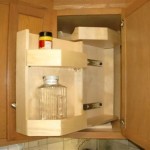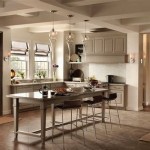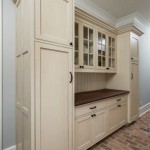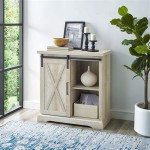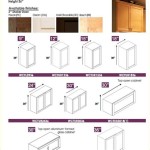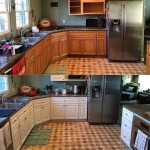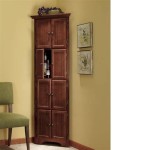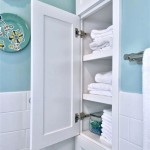How To Clean Old Grease From Kitchen Cabinets
Kitchen cabinets, particularly those located near the stovetop, are prone to accumulating a stubborn layer of old grease. This greasy film, often a combination of cooking oils, food splatters, dust, and airborne particles, not only detracts from the kitchen's aesthetic appeal but can also become a breeding ground for bacteria. Effective grease removal requires understanding the nature of the grease, choosing appropriate cleaning agents, and employing proper techniques to avoid damaging the cabinet finish.
The buildup of grease is a gradual process. Cooking activities, particularly frying and sautéing, release microscopic oil droplets into the air. These droplets, propelled by heat and ventilation, eventually settle on surfaces, including kitchen cabinets. Over time, these droplets oxidize and solidify, forming a sticky, tenacious layer. Dust and other airborne contaminants adhere to this greasy surface, further compounding the problem and creating a difficult-to-remove grime.
Before commencing the cleaning process, it is crucial to identify the type of cabinet finish. Common finishes include painted wood, stained wood, laminate, and metal. Each material reacts differently to various cleaning agents. Using an inappropriate cleaner can result in discoloration, peeling, or damage to the cabinet surface. Therefore, a preliminary assessment is a fundamental step.
Key Point 1: Assessing the Cabinet Finish and Selecting Appropriate Cleaning Solutions
The careful selection of cleaning solutions is paramount. Abrasive cleaners, such as scouring powders and steel wool, should be avoided, particularly on painted or laminate surfaces, as they can cause scratches and dull the finish. Strong chemical solvents, while effective at dissolving grease, can also damage certain cabinet materials. It is always recommended to begin with the mildest cleaning solution and gradually increase the strength as needed.
For painted wood cabinets, a mild solution of dish soap and warm water is often sufficient. Dish soap is designed to emulsify fats and oils, making it an effective degreaser. A soft cloth or sponge should be used to apply the solution in gentle, circular motions. Avoid excessive scrubbing, which can damage the paint. After cleaning, the surface should be thoroughly rinsed with clean water and dried with a clean cloth.
Stained wood cabinets can be cleaned using a similar approach, but it is important to test the cleaning solution in an inconspicuous area first to ensure it does not affect the stain. Wood is a porous material, and excessive moisture can cause warping or swelling. Therefore, it is crucial to avoid over-wetting the surface and to dry it promptly after cleaning. Wood-specific cleaners and polishes can be used to maintain the wood's luster and provide a protective barrier against future grease buildup.
Laminate cabinets are relatively easy to clean. A mixture of warm water and vinegar is often effective at removing grease and grime. Vinegar is a natural degreaser and disinfectant. However, prolonged exposure to vinegar can damage certain laminate finishes, so it is important to use it sparingly and to rinse the surface thoroughly after cleaning. Avoid using abrasive cleaners or scouring pads on laminate cabinets, as they can scratch the surface.
Metal cabinets, such as those made of stainless steel, can be cleaned with a variety of solutions, including dish soap and water, vinegar, or specialized stainless steel cleaners. Stainless steel is resistant to many chemicals, but it can be scratched by abrasive cleaners. Therefore, it is important to use a soft cloth or sponge and to avoid scrubbing aggressively. After cleaning, the surface should be dried with a clean cloth to prevent water spots.
For particularly stubborn grease deposits, a paste made of baking soda and water can be used as a mild abrasive. Baking soda is a natural alkaline substance that helps to neutralize and dissolve grease. The paste should be applied to the affected area and allowed to sit for a few minutes before being gently scrubbed with a soft cloth or sponge. The surface should then be thoroughly rinsed with clean water and dried.
Key Point 2: Implementing Effective Cleaning Techniques and Tools
The application of cleaning solutions and the employed cleaning techniques are as important as the choice of cleaning agent. The use of appropriate tools, such as microfiber cloths and soft-bristled brushes, can significantly enhance the efficiency and effectiveness of the cleaning process.
Microfiber cloths are highly absorbent and excellent at trapping dirt and grease. They are also gentle on surfaces, reducing the risk of scratching or damage. Multiple cloths should be used during the cleaning process, with one cloth for applying the cleaning solution, one for rinsing, and one for drying. This prevents the redistribution of grease and grime.
Soft-bristled brushes, such as those used for cleaning dishes, can be useful for scrubbing crevices and detailed areas. However, it is important to use a brush with soft bristles to avoid scratching the cabinet surface. The brush should be used in gentle, circular motions to loosen the grease and grime. Before using a brush, it is recommended to test it in an inconspicuous area to ensure it does not damage the finish.
Steam cleaners can also be effective for removing grease from kitchen cabinets. The high temperature of the steam helps to loosen and dissolve the grease, making it easier to wipe away. However, steam cleaners should be used with caution on wood cabinets, as excessive moisture can cause damage. It is important to use a low steam setting and to dry the surface promptly after cleaning. Steam cleaning is generally more suitable for laminate and metal cabinets.
When cleaning, it is important to work in sections. Applying the cleaning solution to a small area at a time prevents it from drying before it can be wiped away. This also allows for more focused attention on heavily soiled areas. The cleaning solution should be applied evenly and allowed to sit for a few minutes to loosen the grease. After cleaning, the surface should be thoroughly rinsed with clean water to remove any residual cleaning solution.
Particular attention should be paid to areas around knobs and handles, as these areas tend to accumulate grease and grime. Remove the knobs and handles, if possible, to facilitate cleaning. These items can be soaked in warm soapy water to loosen the grease. A small brush or cotton swab can be used to clean the intricate details.
Key Point 3: Preventive Measures to Minimize Future Grease Buildup
Maintaining clean kitchen cabinets is not only about removing existing grease but also about implementing preventive measures to minimize future buildup. Simple practices, such as regular cleaning and proper ventilation, can significantly reduce the frequency and intensity of grease accumulation.
Regular cleaning is the most effective way to prevent grease buildup. Wiping down the cabinets with a damp cloth and mild detergent on a weekly basis can prevent grease from accumulating to the point where it becomes difficult to remove. This routine cleaning effort is much less demanding than tackling a heavy buildup of old grease.
Proper ventilation is also crucial. Using the range hood while cooking helps to exhaust grease-laden air from the kitchen, preventing it from settling on surfaces. Ensure the range hood filters are clean and functioning properly. Clean or replace the filters regularly to maintain optimal performance. If a range hood is not available, open windows and doors to improve ventilation while cooking.
Consider using splatter screens when frying or sautéing. Splatter screens are mesh covers that fit over frying pans and pots, preventing oil from splattering onto surrounding surfaces. This reduces the amount of grease that is released into the air and helps to keep the kitchen cleaner.
Promptly clean up spills and splatters as they occur. Allowing spills to sit and dry will only make them more difficult to remove later. Wipe up spills immediately with a damp cloth and mild detergent. This simple practice can prevent stains and grease buildup.
Applying a protective sealant or wax to the cabinets can also help to prevent grease from adhering to the surface. This creates a barrier that makes it easier to wipe away spills and grease. Follow the manufacturer's instructions carefully when applying sealants or waxes.
By understanding the nature of grease, selecting appropriate cleaning agents, employing effective cleaning techniques, and implementing preventive measures, maintaining clean and grease-free kitchen cabinets becomes a manageable and achievable task. A proactive approach to kitchen hygiene not only enhances the aesthetic appeal of the space but also contributes to a healthier and more sanitary environment.

How To Remove Grease From Kitchen Cabinets 3 Methods Bob Vila

How To Clean Sticky Grease Off Kitchen Cabinets Ovenclean

Get Grease Off Kitchen Cabinets Easy And Naturally

How To Clean Grimy Kitchen Cabinets With 2 Ingredients

Degrease Kitchen Cabinets With An All Natural Homemade Cleaner

Get Grease Off Kitchen Cabinets Easy And Naturally

How To Remove Years Of Old Nasty Grease Off Kitchen Cabinets

How To Clean Sticky Grease Off Kitchen Cabinets

Old Grease Stains Archives Woohome
How To Clean Sticky Wood Kitchen Cabinets Quora
Related Posts

